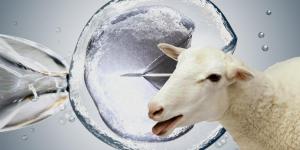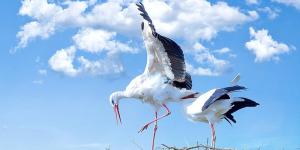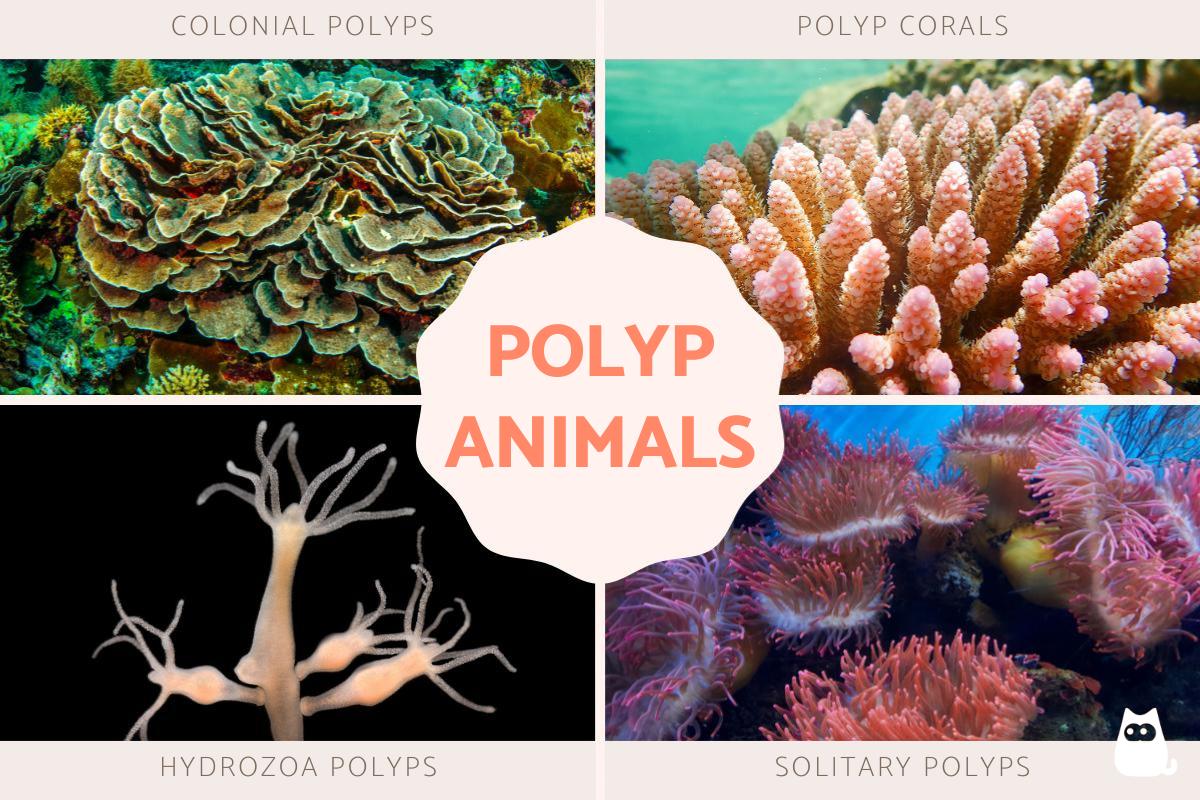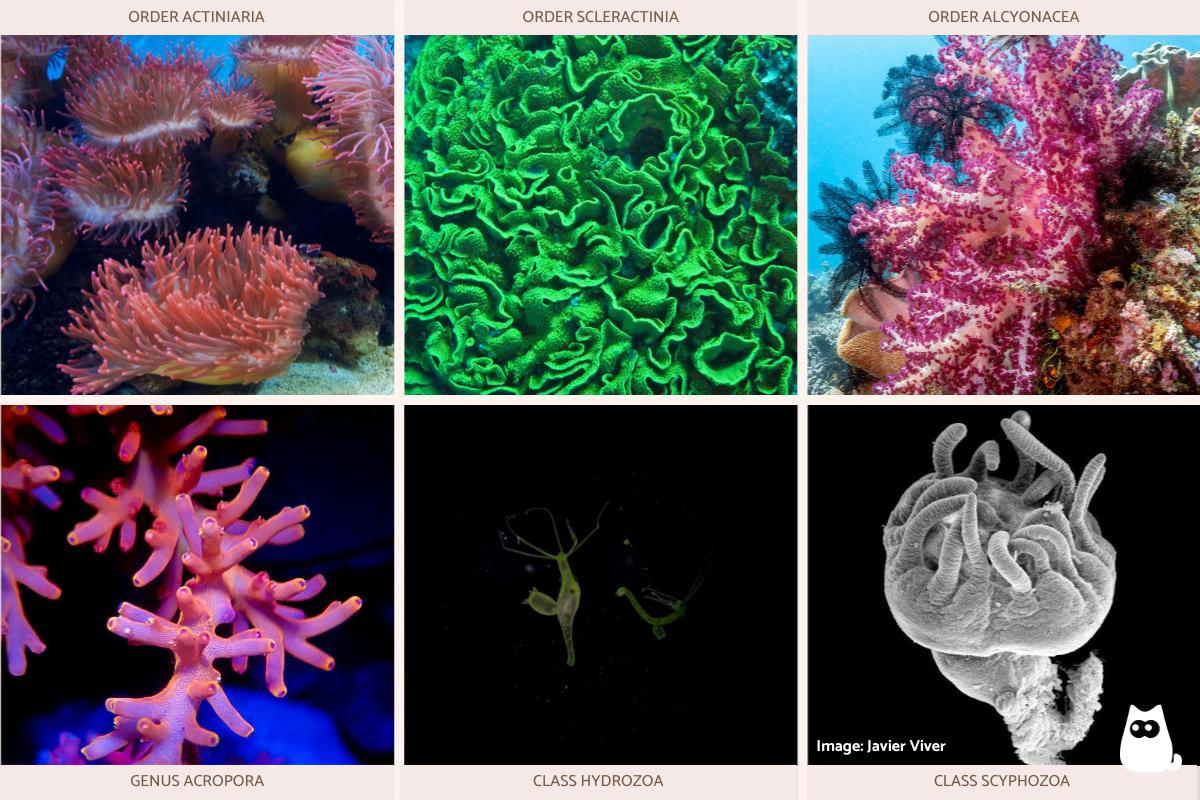What Are Polyp Animals?

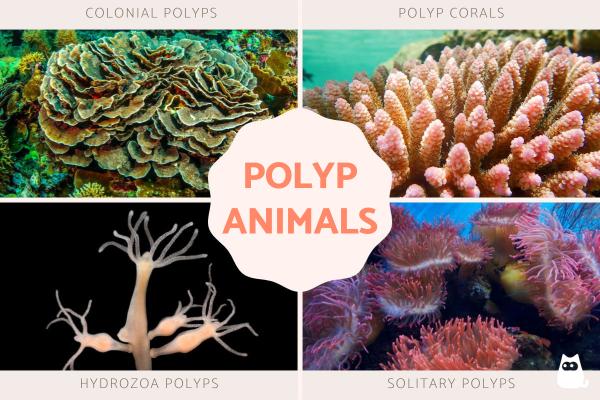
Found in the phylum Cnidaria, polyps are small organisms which are essential to marine ecosystems. They are cylindrical in shape and have tentacles, the latter they use for feeding and other behaviors. Almost all are sessile, being attached to certain substrates. It is for this reason they are so important to coral reefs. Not only do they maintain these reef ecosystems, but it is from colonies of polyps that they are made. This is because types of polyps include coral, anemones and hydrozoa. Non-polyp organisms live in amongst these marine animals and use them for their survival.
AnimalWised reveals all in our article asking what are polyps animals? In addition to providing a definition, we look at their characteristics and types in aquatic ecosystems. We also explore their behavior in terms of diet and reproduxtion.
What are polyp animals?
Marine polyps are one of two main bodily forms of organisms belonging to the phylum Cnidaria. The other form is the adult stage of jellyfish known as the medusa, with the polyp being the juvenile stage. In other polyp animals such as hydrozoa, the organism can alternate between polyp and medusa stages. Other cnidarians never have a medusa stage, meaning they polyp is their final adult form.
Almost all polyp animals are sessile, with most exceptions belonging to the class Hydrozoa. Instead of being free-living in the water, sessile polyps remain attached to various marine substrates such as corals, rocks or sandy sea beds. They may be solitary animals such as certain types of sea anemone, although many form complex colonies such as reef-building corals.
All cnidarians have tentacles with stinging cells at their tips which they use to capture prey and defend themselves against predators. These cells are known as cnidocytes. Some fish and other marine species are able to live in amongst these toxic animals without being harmed, often become they have established symbiotic relationships with them. Polyps are essential to facilitate a great diversity of marine life in ecosystems such as coral reefs.
While most polyp animals are marine organisms, there is a minority which can be found in the class Hydrozoa. You can learn more about the animals which make up this phylum with our article asking what are cnidarians?
Characteristics of polyp animals
The cnidarian animals which are considered polyps have a great diversity in terms of morphology and other characteristics. Despite such biodiversity among individual species, there are certain defining characteristics common to all polyp animals:
- Cylindrical body: polyps have a tubular or cylindrical body with a mouth at the top which is surrounded by tentacles. The mouth also functions as an anus, something necessary as they have an incomplete digestive system. At the base of the body they have an adhesive disk that allows them to attach to a substrate. Learn more about a typically sessile polyp with our article asking what are sea anemones?
- Tentacles: they possess tentacles that are equipped with cnidocytes, specialized cells that contain a structure called a nematocyst. These cells can inject toxins to paralyze prey or deter predators.
- Radial symmetry: polyps have radial symmetry, meaning their body parts are arranged around a central axis, like the spokes of a wheel.
- Size: polyp size varies depending on the species. For example, anemones can measure from a few centimeters to over a meter in diameter, while coral polyps are usually much smaller at only a few millimeters.
Regarding their habitat, polyps live almost exclusively in marine environments, from surface waters to abyssal depths. Only some species are found in fresh water such as hydrozoans of the genus Hydra.
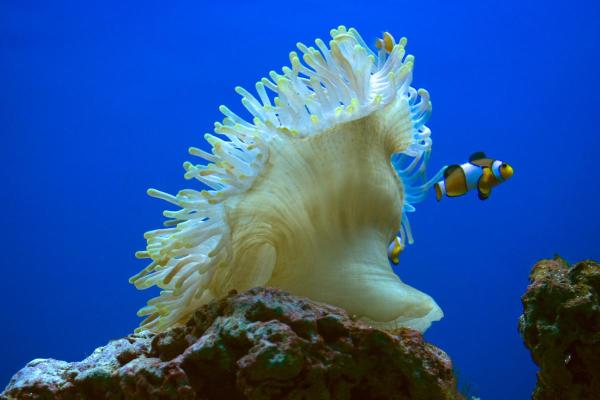
Types of polyp animals
While all are found in the phylum Cnidaria, polyps can be classified according to various categories. These include the following:
- Solitary polyps: they live independently and do not form colonies. An example of this type of marine polyp are sea anemones of the order Actiniaria.
- Colonial polyps: form colonies where individuals are connected by tissues and share resources. Examples include hard corals (order Scleractinia) and gorgonians (order Alcyonacea).
- Coral polyps: they secrete a calcareous skeleton that contributes to reef formation, such as corals of the genus Acropora.
- Hydrozoan polyps: belong to the class Hydrozoa, they can alternate between polyp and medusa forms during their life cycle. For example, the fresh water polyp (Hydra vulgaris).
- Jellyfish polyps: some jellyfish have a polyp phase in their life cycle, such as those in the class Scyphozoa. An important example is the common jellyfish (Aurelia aurita).
Discover more about the diversity of some polyps with our article sharing different types of bioluminescent jellyfish.

Polyp animals examples
The phylum Cnidaria is home to around 10,000 individual species, all of which are classified according to various classes and orders. We look at some examples of polyp animals here:
- Sea anemones (order Actiniaria): an example species is the Mediterranean snakelocks sea anemone (Anemonia sulcata).
- Hard corals (order Scleractinia): also known as stony corals, this order corresponds to reef-forming corals in tropical waters, such as those of the genus Acropora.
- Soft corals (order Alcyonacea): there are gorgonians which are known as sea fans or sea whips. They form soft corals thanks to a skeletal structure made of gorgonin, a protein that gives them flexibility. A representative of this polyp type is the common sea fan (Gorgonia ventalina). We explain more by asking what are gorgonia corals?
- Hydrozoans (class Hydrozoa): an example are freshwater hydras, such as Hydra vulgaris. They are small and tubular in shape. A very notable curiosity is that they do not show aging, one reason they are widely studied in marine biology.
- Jellyfish polyps (class Scyphozoa): represents the polyp state of certain jellyfish, which will generate the jellyfish larvae.
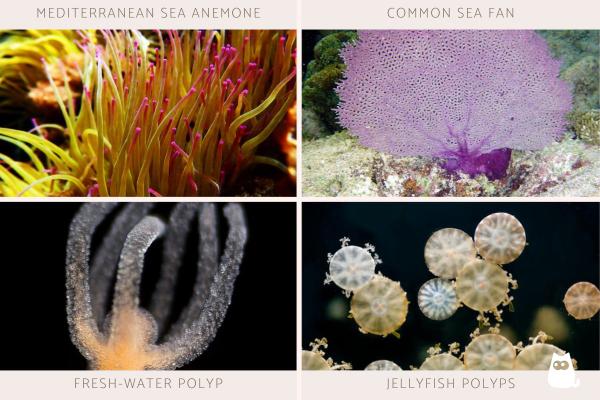
Polyp animals diet and feeding
Polyps are mainly carnivorous and feed on:
- Plankton
- Small fish
- Crustaceans
- Microscopic organisms
Some species also obtain nutrients through a symbiotic relationship with algae called zooxanthellae. These single-celled organisms perform photosynthesis and share the nutrients they create with the polyp.
How do marine polyps feed?
The method of food capture in polyps is through their tentacles. The cnidocytes present in these tentacles inject toxins that paralyze the prey. Once captured, the prey is taken into the mouth and digested in the gastrovascular cavity.
You can learn more about how venomous cnidarians can be with our list of the world's most dangerous jellyfish.
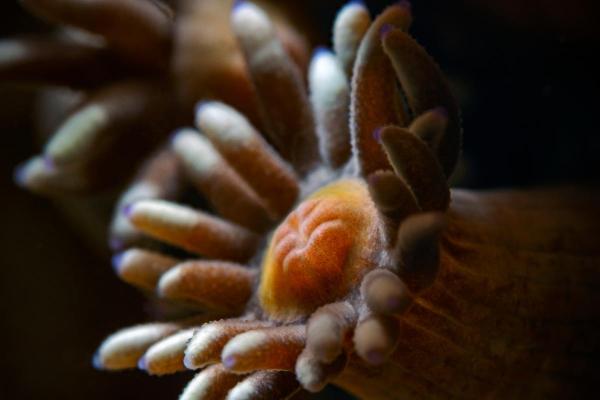
How do polyp animals reproduce?
Sea polyps can reproduce both sexually and asexually:
- Asexual reproduction: occurs by budding, where new polyps sprout from the body of the parent polyp and eventually separate to form independent individuals. It also occurs by fragmentation, where part of the polyp breaks off and grows as a new individual.
- Sexual reproduction: polyps release gametes (eggs and sperm) into the water, where external fertilization occurs. The fertilized egg develops into a larva called a planula, which swims freely before attaching to the substrate and developing into a new polyp.
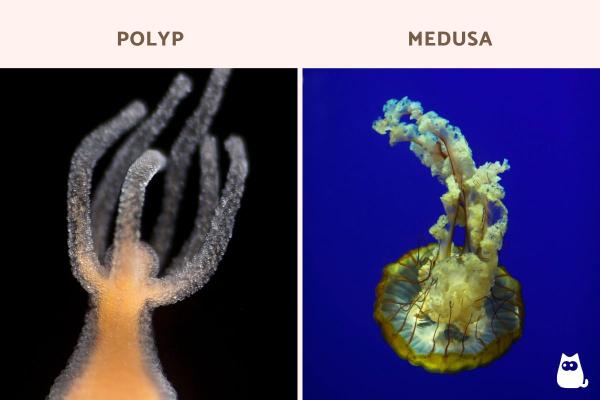
Difference between polyps and medusa
Not all jellyfish have a polyp stage, but most true jellyfish (class Scyphozoa) do. In true jellyfish, the polyp represents the juvenile stage of the jellyfish life cycle and the medusa is the adult stage. Despite being considered juvenile, polyps can reproduce. To better understand, we look at the differences between polyps and medusae:
- Body shape: polyps have an elongated, cylindrical shape with a mouth and tentacles that face upwards. Their base is fixed to the substrate, giving them a sessile lifestyle (i.e. they do not move). Conversely, medusae have a bell-shaped body known as an umbrella, with their mouth and tentacles facing downwards. They are free-living organisms that float or swim in the water column.
- Mobility: polyps are sessile organisms, meaning they remain fixed in one place, such as rocks, corals or sea beds. The adult medusa is mobile and moves actively using rhythmic contractions of their body. We explain how medusa swim with our article explaining how do jellyfish move?
- Habitat: polyps are found attached to hard surfaces such as coral reefs, rocks or sandy substrates. Jellyfish live in the water column, floating or swimming in oceans and seas, ranging from the surface to great depths.
- Function in the life cycle: polyps are often associated with asexual reproduction (by budding or fragmentation) and feeding. In many species, polyps are the dominant phase of the life cycle. This is the case with coral species. Medusae are more closely associated with sexual reproduction, as they produce gametes (eggs and sperm) that are released into the water for fertilization. Additionally, the medusa helps in the dispersal of species.
- Structure and anatomy: polyps have a simpler body, with a gastrovascular cavity that serves both digestion and nutrient distribution. Medusae have a more complex structure, with a branched gastrovascular cavity and a greater ability to move and capture prey.
- Life cycle: in many cnidarian species, polyps represent the asexual phase of the life cycle such as jellyfish of the class Scyphozoa. Medusae represent the sexual phase. Polyps can produce medusae by a process called strobilation.
Cnidarians such as these polyp animals are often under threat due to climate change and other factors. Learn more with our article on the endangered animals in the Great Barrier Reef.

If you want to read similar articles to What Are Polyp Animals?, we recommend you visit our Facts about the animal kingdom category.
- Chia, F. S., & Crawford, B. (1977). Comparative fine structural studies of planulae and primary polyps of identical age of the sea pen, Ptilosarcus gurneyl. Journal of morphology, 151(1), 131–157. https://doi.org/10.1002/jmor.1051510108
- van Walraven, L., Driessen, F., van Bleijswijk, J., Bol, A., Luttikhuizen, P. C., Coolen, J. W., Bos, O. G., Gittenberger, A., Schrieken, N., Langenberg, V. T., & van der Veer, H. W. (2016). Where are the polyps? Molecular identification, distribution and population differentiation of Aurelia aurita jellyfish polyps in the southern North Sea area. Marine biology, 163, 172.
https://doi.org/10.1007/s00227-016-2945-4 - Williams, G.C., Hoeksema, B.W., & van Ofwegen, L.P. (2012). A fifth morphological polyp in pennatulacean octocorals, with a review of polyp polymorphism in the genera Pennatula and Pteroeides (Anthozoa: Pennatulidae). Zoological Studies, 51(7), 1006-1017.

